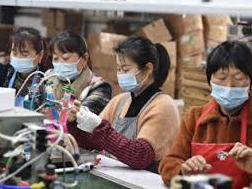
US President sets Tuesday deadline for Beijing to withdraw counter-tariffs or face 50% levy, intensifying fears of a deepening global trade conflict.
Donald Trump has dramatically raised the stakes in his ongoing trade standoff with China, threatening to impose a 50% tariff on Chinese imports if Beijing refuses to withdraw its recently announced 34% countermeasure. The warning came just days after Trump implemented his “Liberation Day” policy, placing a 34% levy on Chinese goods and setting a baseline 10% tariff on most US trading partners.
In a statement on Truth Social, Trump gave China a deadline until Tuesday to reverse its retaliatory action or face further economic punishment. China’s Ministry of Commerce responded sharply, calling the move “a mistake on top of a mistake” and rejecting what it described as Washington’s “blackmail tactics”.
If the US follows through, some American firms could face a total import duty of 104% on Chinese goods, when added to existing 20% tariffs from March and the latest 34%. The confrontation has sparked fears that the world’s two largest economies may be edging closer to a prolonged trade war.
Trump also declared that all discussions with China regarding tariff negotiations would be halted immediately if Beijing did not comply. Speaking to reporters on Monday, he said there were no plans to pause global tariffs for broader negotiations, adding: “We have a lot of countries coming to us now, ready to make fair deals.”
He also warned that any nation attempting retaliation would be “met immediately with new and substantially higher tariffs.” China, in turn, condemned the rhetoric, asserting that bullying tactics would not succeed and accusing the US of “economic coercion” disguised as reciprocity.
A Chinese embassy spokesperson, Liu Pengyu, criticised the move as protectionist and self-serving: “This is a classic act of unilateralism and economic intimidation.”
Despite the aggressive tone, Trump hinted that some tariff arrangements might become permanent while others remained open to discussion. “We have $36 trillion in debt for a reason,” he said, adding that negotiations would soon involve China and several other countries.
China is a major exporter to the US, particularly in electronics, machinery, furniture, vehicles and toys. The US, in contrast, sends large volumes of agricultural products, aircraft, and pharmaceuticals to China.
Financial markets reacted strongly to the developments. On Monday, US markets plunged at opening before stabilising slightly, while the FTSE 100 and other European indices ended the day over 4% lower.
Asia saw the sharpest downturn. Hong Kong’s Hang Seng plummeted more than 13% — its worst single-day drop since 1997. Though some Asian markets recovered on Tuesday, others, including Taiwan, Singapore, Indonesia and Thailand, suffered continued losses.
In a related development, Trump met Israeli Prime Minister Benjamin Netanyahu at the White House, where Netanyahu promised to correct Israel’s trade imbalance with the US and remove trade barriers swiftly. Israel faces a 17% tariff under Trump’s new policy, starting April 9.
Elsewhere, Japan confirmed that it would dispatch negotiators to Washington, while European Commission President Ursula von der Leyen proposed a “zero-for-zero tariff” pact, though she warned the EU remained prepared to retaliate if necessary.
Trump later claimed that the EU was established “to hurt the United States in trade,” reinforcing his administration’s hard-line stance on global commerce.










